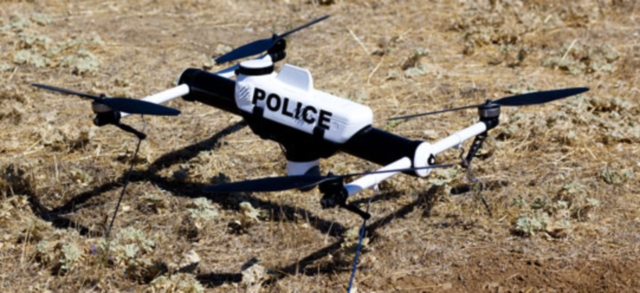 The RCMP is planning to expand its fleet of remote-controlled “eyes in the sky,” by buying unmanned quadrotors from Southern California-based AeroVironment Inc.
The RCMP is planning to expand its fleet of remote-controlled “eyes in the sky,” by buying unmanned quadrotors from Southern California-based AeroVironment Inc.
The Qube is tailor-made for use by police. Small enough to fit in the trunk of a car and controlled using touch-screen tablets, these toy-like machines are equipped with live-stream video cameras and thermal-imaging technology to give police a bird’s eye view of an accident scene and aid in search-and-rescue operations.
RCMP’s F Division in Saskatchewan, which has taken a lead role testing unmanned aircraft for the force, just posted on a government-contracting website notice of its intent to acquire as many as three Qubes and related accessories for about $270,000.
“It’s starting to catch on more and more. Eventually, I think you’ll see (unmanned aircraft systems) in almost all the provinces,” said RCMP Staff Sgt. Dave Domoney in Regina.
The force already has at its disposal 18 less-expensive, Canadian-made models in several divisions — nine in Saskatchewan, four in Alberta, two in Manitoba, one each in British Columbia and the Northwest Territories, and one at headquarters in Ottawa.
Some municipal police agencies and the Ontario Provincial Police also have them.
Domoney said the RCMP took interest in the costlier Qube because it can stay up in the air for 40 minutes, longer than others. The force is still saving money in the long run, he said, because it can cost thousands of dollars per hour to deploy a regular helicopter.
Small, low-altitude UAS offer many benefits, police say: They can assist in collision reconstruction by helping investigators see skid marks that they may have overlooked; they can identify potential threats to tactical officers responding to a critical incident; and they can help locate missing people over difficult terrain.
Though police insist they have no intention of using these machines for surveillance purposes, privacy advocates have raised concerns.
Ann Cavoukian, Ontario’s information and privacy commissioner, published a report last August that said while unmanned aircrafts offered many benefits, they could become “extremely invasive.”
While Transport Canada requires all operators of unmanned aircraft (except hobbyists) to submit forms outlining how they plan to use the machines, the focus is more on safety than about privacy, Cavoukian said.
“There are unique privacy challenges posed, due to UAS’ potential for constant surveillance from vantage points that are difficult to discern,” she wrote. “Special use restrictions and regulatory measures will likely be necessary, going forward.”
Similar concerns were raised last September when Halton Regional Police in Ontario announced they had uncovered a large marijuana-grow operation in a field using an unmanned aircraft. Police said they had the property owner’s permission to fly over the area.
The RCMP’s Domoney said the force does not send its unmanned aircraft on fishing expeditions and limits their use to four scenarios: accident reconstruction, search-and-rescue operations, major crime scenes and situations involving emergency response teams.
While the force does not yet have a national policy in place for the use of these machines, one is “very close to being completed,” he said.
Source: Ottawa Citizen
